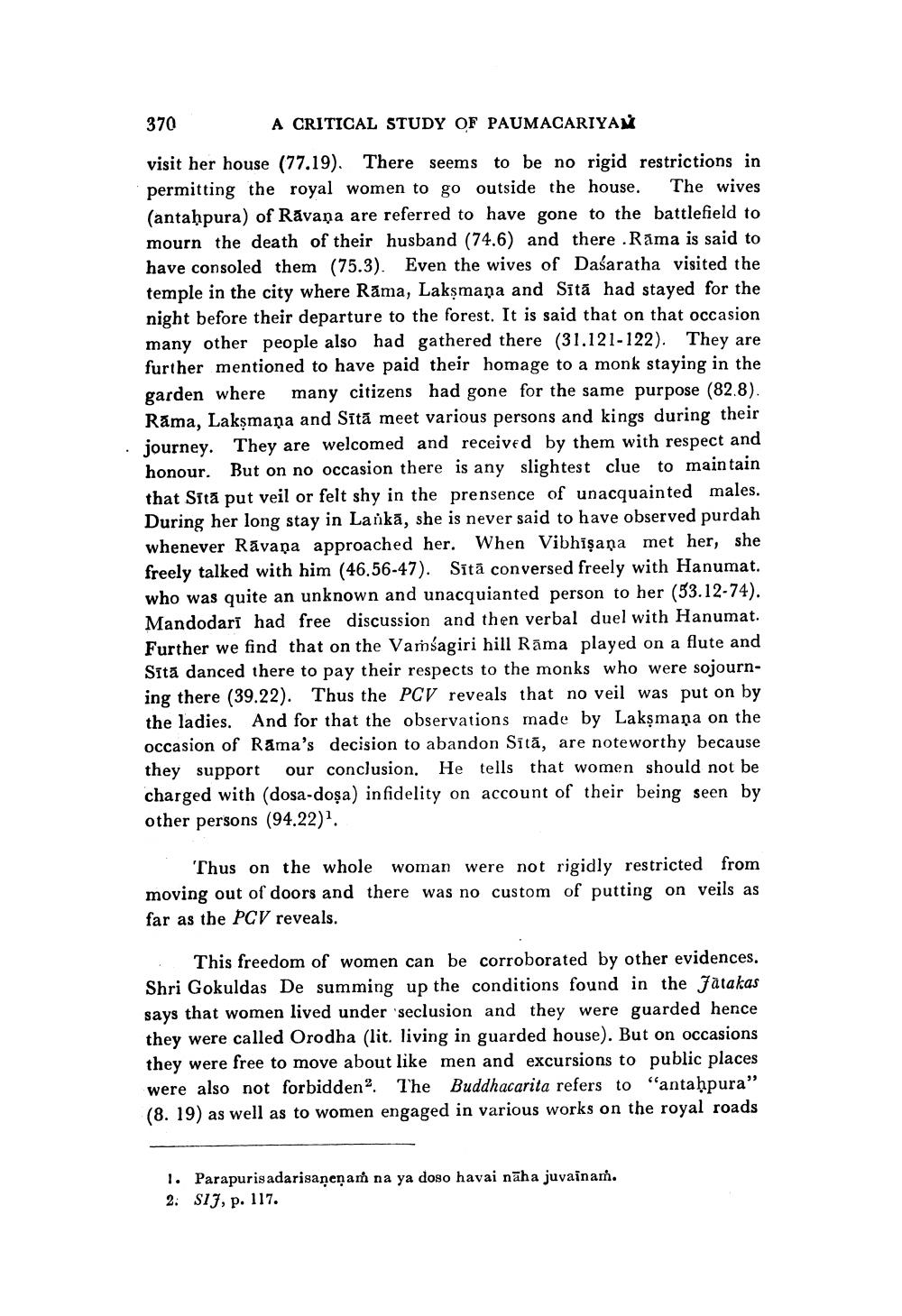________________
370
A CRITICAL STUDY OF PAUMACARIYA
visit her house (77.19). There seems to be no rigid restrictions in permitting the royal women to go outside the house. The wives (antahpura) of Rāvana are referred to have gone to the battlefield to mourn the death of their husband (74.6) and there .Rama is said to have consoled them (75.3). Even the wives of Dasaratha visited the temple in the city where Rāma, Laksmana and Sitä had stayed for the night before their departure to the forest. It is said that on that occasion many other people also had gathered there (31.121-122). They are further mentioned to have paid their homage to a monk staying in the garden where many citizens had gone for the same purpose (82.8). Ráma, Lakşmaņa and Sītā meet various persons and kings during their journey. They are welcomed and received by them with respect and honour. But on no occasion there is any slightest clue to maintain that Sitā put veil or felt shy in the prensence of unacquainted males. During her long stay in Laikā, she is never said to have observed purdah whenever Ravana approached her. When Vibhişana met her, she freely talked with him (46.56-47). Sitä сonversed freely with Hanumat. who was quite an unknown and unacquianted person to her (53.12-74). Mandodarī had free discussion and then verbal duel with Hanumat. Further we find that on the Varsagiri hill Rāma played on a flute and Sīta danced there to pay their respects to the monks who were sojourning there (39.22). Thus the PCV reveals that no veil was put on by the ladies. And for that the observations made by Lakşmaņa on the occasion of Rama's decision to abandon Sitā, are noteworthy because they support our conclusion. He tells that women should not be charged with (dosa-dosa) infidelity on account of their being seen by other persons (94.22).
Thus on the whole woman were not rigidly restricted from moving out of doors and there was no custom of putting on veils as far as the PCV reveals.
. This freedom of women can be corroborated by other evidences. Shri Gokuldas De summing up the conditions found in the Jatakas says that women lived under 'seclusion and they were guarded hence they were called Orodha (lit. living in guarded house). But on occasions they were free to move about like men and excursions to public places were also not forbidden The Buddhacarita refers to "antahpura” (8. 19) as well as to women engaged in various works on the royal roads
1. Parapurisadarisaņeņam na ya doso havai näha juvainam. 2. SIJ, p. 117.




